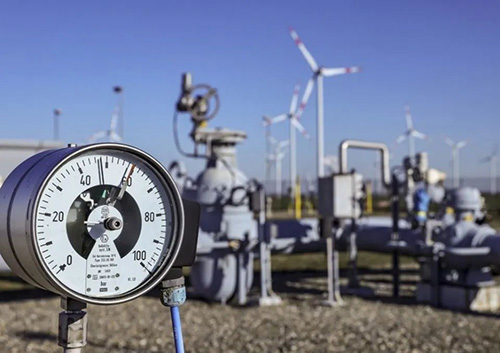As the European energy market continues to fluctuate, the rise in electricity and natural gas prices has once again aroused people’s attention to energy independence and cost control.
1. Current situation of energy shortage in Europe
① Rising electricity prices have intensified energy cost pressure
In November 2023, the wholesale electricity price in 28 European countries rose to 118.5 euros/MWh, a month-on-month increase of 44%. Rising energy costs are putting tremendous pressure on household and corporate users.
Especially during peak electricity consumption periods, the instability of energy supply has intensified electricity price fluctuations, driving the application demand of energy storage systems.
② Tight natural gas supply and rising prices
As of December 20, 2023, the Dutch TTF natural gas futures price rose to 43.5 euros/MWh, up 26% from the low point on September 20. This reflects Europe’s continued dependence on natural gas supply and increased demand during the winter peak.
③ Increased risk of energy import dependence
Europe has lost a large amount of cheap natural gas supply after the Russian-Ukrainian conflict. Although it has increased its efforts to import LNG from the United States and the Middle East, the cost has risen significantly, and the energy crisis has not been completely alleviated.
2. The driving force behind the growth of demand for household energy storage
① Urgent need to reduce electricity costs
The frequent fluctuations in electricity prices make it possible for users to store electricity when electricity prices are low and use electricity when electricity prices are high through energy storage systems. Data show that the electricity costs of households equipped with energy storage systems can be reduced by 30%-50%.
② Achieving energy self-sufficiency
The instability of natural gas and electricity supply has prompted household users to prefer installing photovoltaic + energy storage systems to improve energy independence and reduce dependence on external energy supply.
③ Policy incentives have greatly promoted the development of energy storage
Germany, France, Italy and other countries have introduced a series of policies to encourage the popularization of household energy storage systems. For example, Germany’s “Annual Tax Act” exempts small photovoltaic and energy storage systems from value-added tax, while providing installation subsidies.
④ Technological progress reduces the cost of energy storage systems
With the continuous advancement of lithium battery technology, the price of energy storage systems has dropped year by year. According to data from the International Energy Agency (IEA), since 2023, the production cost of lithium batteries has dropped by about 15%, significantly improving the economic efficiency of energy storage systems.
3. Market Status and Future Trends
① Status of European Household Energy Storage Market
In 2023, the demand for household energy storage market in Europe will grow rapidly, with new energy storage installed capacity of about 5.1GWh. This figure basically digests the inventory at the end of 2022 (5.2GWh).
As the largest household energy storage market in Europe, Germany accounts for nearly 60% of the overall market, mainly due to its policy support and high electricity prices.
② Market growth prospects
Short-term growth: In 2024, although the growth rate of the global energy storage market is expected to slow down, with a year-on-year increase of about 11%, the European household energy storage market will still maintain a high growth momentum due to factors such as energy shortages and policy support.
Medium- and long-term growth: It is expected that by 2028, the cumulative installed capacity of the European household energy storage market will exceed 50GWh, with an average annual compound growth rate of 20%-25%.
③ Technology and policy drive
Smart grid technology: AI-driven smart grid and power optimization technology further improve the efficiency of energy storage systems and help users better manage power loads.
Continued policy support: In addition to subsidies and tax incentives, countries also plan to pass legislation to promote the widespread use of photovoltaic and energy storage systems. For example, France plans to add 10GWh of household energy storage projects by 2025.
Post time: Dec-24-2024










